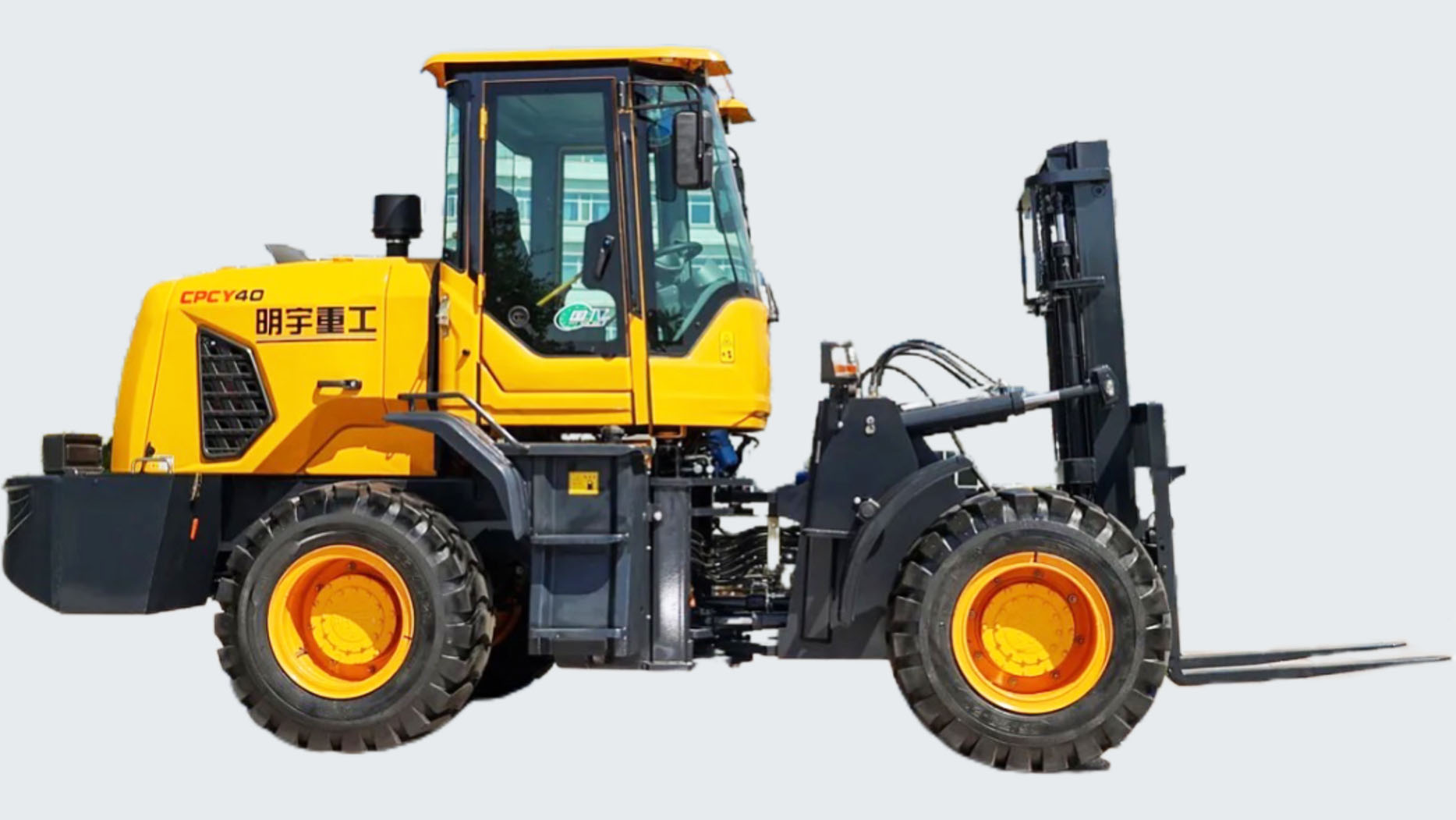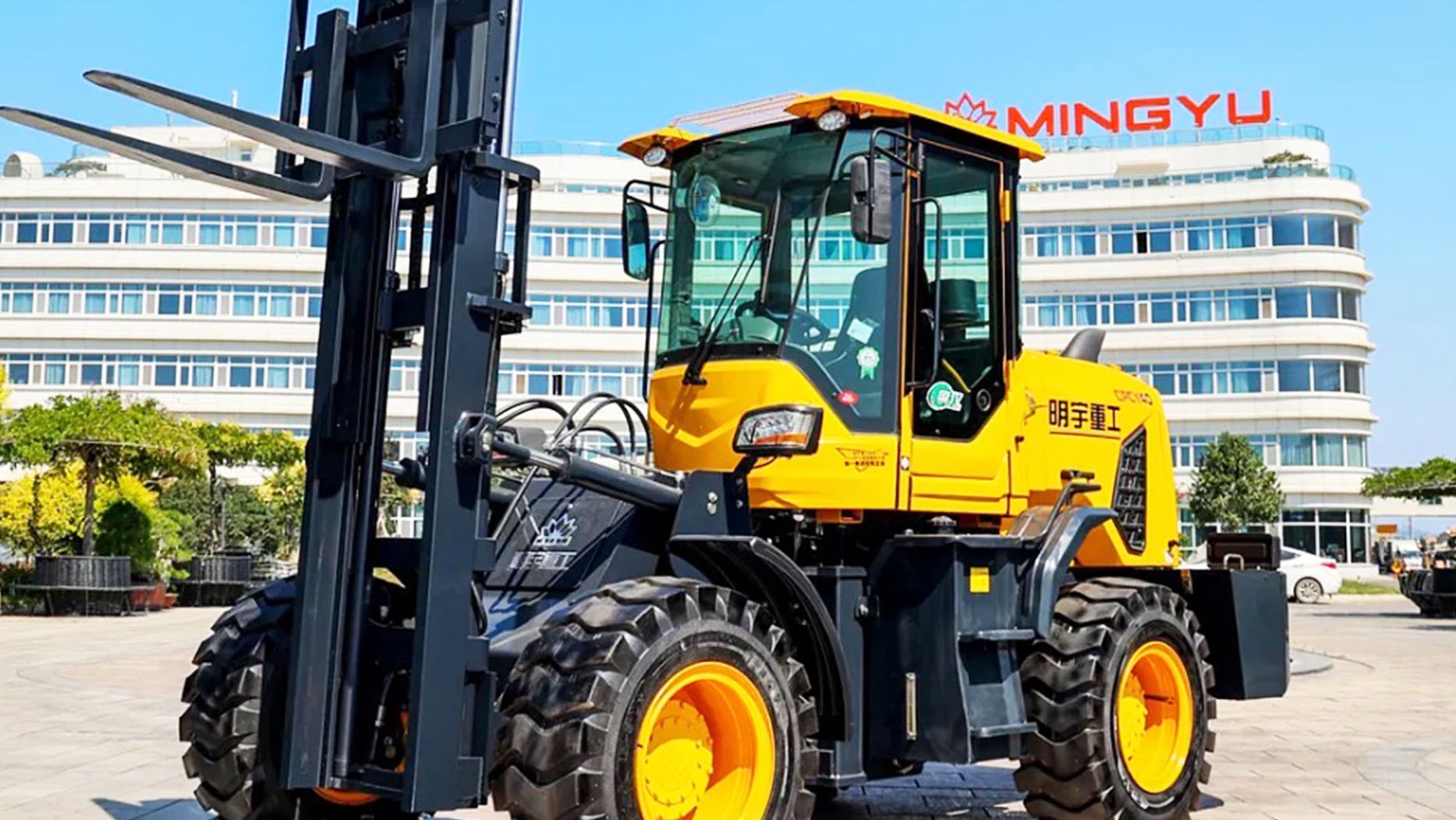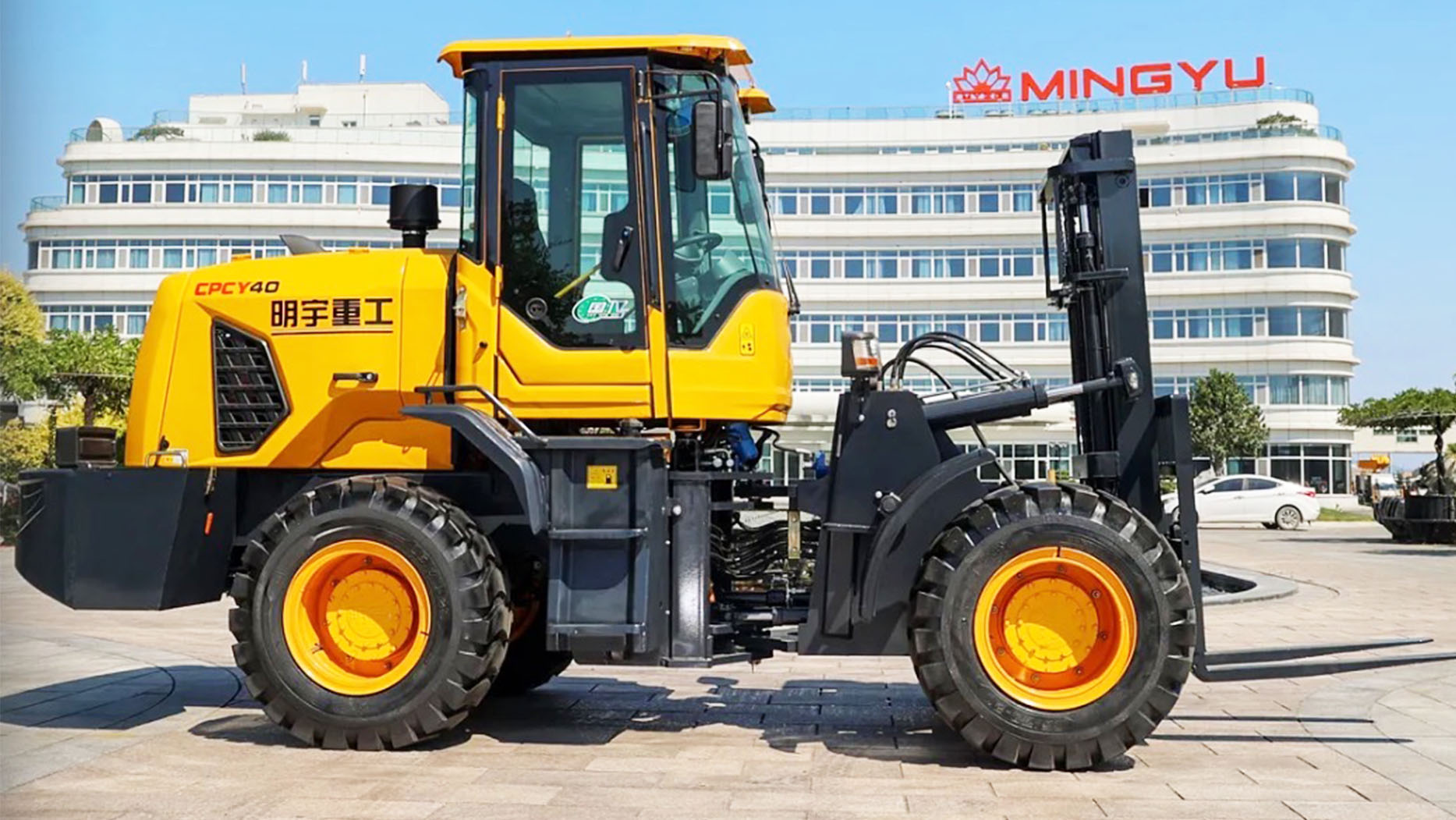While both rough terrain forklifts and industrial forklifts share the fundamental purpose of lifting and moving materials, they are engineered for vastly different environments and applications. Confusing the two can lead to significant inefficiencies, safety hazards, and costly equipment damage. Understanding the core distinctions is crucial for businesses to select the right machine for their specific operational needs, ensuring optimal performance and maximizing their return on investment.
An industrial forklift, often the workhorse of warehouses and factories, is built for precision, speed, and efficiency on smooth, flat surfaces. A rough terrain forklift, conversely, is a rugged, powerful machine designed to conquer challenging and uneven ground, making it indispensable on construction sites, farms, lumberyards, and other demanding outdoor settings. Let's delve into the fundamental differences that set these two categories apart, highlighting why each excels in its specific domain.
1. Operating Environment: The Primary Divide
The most significant factor differentiating these two types of forklifts is the environment in which they are designed to operate.
Industrial Forklift:
Environment: Primarily designed for indoor use on flat, even, and often paved or concrete surfaces. This includes warehouses, distribution centers, manufacturing plants, retail spaces, and paved loading docks.
Design Philosophy: Focus on maneuverability in tight aisles, precise lifting, and efficient material flow on smooth floors. They are optimized for speed and stability under these controlled conditions.
Impact: Their compact design, solid or pneumatic tires, and lower ground clearance are perfectly suited for the confined and organized nature of indoor operations.
Rough Terrain Forklift:
Environment: Specifically engineered for rugged, uneven, unpaved, or outdoor terrains. This encompasses muddy construction sites, sandy beaches, rocky quarries, agricultural fields, and sprawling lumberyards. They must operate reliably in challenging weather conditions, from rain and snow to dust and extreme temperatures.
Design Philosophy: Emphasis on power, stability, traction, and durability to navigate obstacles, steep grades, and challenging ground conditions without losing balance or getting stuck.
Impact: Their design reflects this, featuring robust construction, powerful engines, specialized tires, and enhanced ground clearance to ensure effective operation where an industrial forklift would simply fail or become a safety risk.

2. Drivetrain and Traction: Conquering the Ground Underfoot
The way power is delivered to the wheels, and the characteristics of the wheels themselves, are vastly different.
Industrial Forklift:
Drive: Most commonly 2WD (two-wheel drive), usually with front-wheel drive, as the primary need is for efficient movement on flat, predictable surfaces.
Tires: Typically equipped with either cushion tires or pneumatic tires.
Cushion Tires: Made of solid rubber, these are ideal for smooth, indoor concrete floors where puncture resistance, long wear, and low rolling resistance are priorities. They offer excellent stability on flat surfaces but provide minimal traction on anything other than perfect ground.
Pneumatic Tires: Air-filled rubber tires, providing more cushioning for operator comfort and some grip. While they can handle slight imperfections, they are still designed for controlled environments and are vulnerable to punctures on rough ground.
Ground Clearance: Relatively low ground clearance. This enhances stability for high stacking indoors and allows for easier entry/exit for operators, but it means they can easily get hung up on obstacles.
Rough Terrain Forklift:
Drive: Predominantly 4WD (four-wheel drive), providing superior traction and power distribution to all wheels. This is critical for navigating mud, sand, loose gravel, snow, and steep inclines. Some models may have 2WD options for lighter-duty rough terrain, but 4WD is the standard for challenging conditions.
Tires: Feature large, wide, deep-tread pneumatic tires, often resembling agricultural or tractor tires. These are specifically designed for maximum grip, flotation (to prevent sinking in soft ground), and resilience against punctures from debris. Many are foam-filled for enhanced puncture resistance.
Ground Clearance: Significantly higher ground clearance. This allows them to clear obstacles like rocks, ruts, curbs, and uneven terrain without damaging the chassis or getting stuck.
Axles: Often equipped with oscillating axles or rigid axles with robust suspension to ensure all wheels maintain contact with the ground on extremely uneven surfaces, maximizing both stability and traction.
3. Power Source and Engine Type: Reliability in All Conditions
The choice of power directly relates to the operating environment and performance demands.
Industrial Forklift:
Power Sources: Can be electric, LP gas, or gasoline.
Electric Forklifts: Increasingly popular for indoor use due to zero emissions, quiet operation, and lower long-term running costs. Ideal for warehouses where air quality and noise are critical concerns.
LP Gas/Gasoline: Offer good power and can be used in well-ventilated indoor spaces or outdoors. They provide quick refueling.
Engine Design: Optimized for relatively consistent power output for indoor lifting and movement, focusing on efficiency within a controlled climate.
Rough Terrain Forklift:
Power Sources: Almost exclusively powered by a forklift diesel engine.
Forklift Diesel: Diesel engines provide the raw power, high torque, and inherent durability needed for heavy lifting, pushing, pulling, and continuous operation in demanding outdoor conditions. They excel in climbing grades and maintaining performance under sustained stress. The power of a forklift 3 ton diesel model is very common here, with larger models readily available.
Engine Design: Built to withstand extreme temperatures, dust, moisture, and continuous heavy loads. They feature robust cooling systems, heavy-duty air filtration, and often specialized components to handle the rigors of rough terrain.
 4. Chassis and Mast Design: Strength vs. Agility
4. Chassis and Mast Design: Strength vs. Agility
The structural integrity and lifting mechanisms are tailored to their respective roles.
Industrial Forklift:
Chassis: Typically features a more compact, rigid chassis designed for stability on flat surfaces and maximum maneuverability in tight aisles. The counterweight is integrated for optimal balance on even ground.
Mast: Masts are optimized for vertical stacking to considerable heights within confined indoor spaces. They often incorporate features like "free lift" (where forks can rise without the mast extending) for low-headroom areas, and multi-stage masts for reaching high shelves.
Turning Radius: Designed for a very tight turning radius to navigate narrow aisles.
Rough Terrain Forklift:
Chassis: Features a heavy-duty, robust, and often articulated or larger, more rigid frame designed to absorb and withstand twisting forces, shocks, and vibrations from uneven terrain. The counterweight is significantly larger to enhance stability on slopes and uneven ground.
Mast: Masts are built for exceptional strength and stability, often with wider stances, heavier components, and specialized cylinders to manage large, sometimes unbalanced, or irregularly shaped loads over rough ground. Lift heights may be less extreme than specialized indoor reach trucks but are more than adequate for outdoor stacking and truck loading. Some models are all-terrain forklifts specifically designed for extreme articulation or stability.
Turning Radius: Generally has a wider turning radius than industrial forklifts due to their larger size and more robust design, though articulated models can improve this.
5. Operator Comfort and Features: Tailored to the Task
While operator comfort and safety are important for both, the focus and specific features differ.
Industrial Forklift:
Comfort: Focus on ergonomic controls, smooth operation, and quietness (especially electric models). Cabs may be open, partially enclosed, or fully enclosed depending on environment.
Features: Often integrate sophisticated electronic controls, telematics for fleet management, advanced safety sensors for indoor collision avoidance, and operator assist systems.
Rough Terrain Forklift:
Comfort: Prioritizes operator protection from environmental elements and the harshness of rough rides. Often features fully enclosed, sealed cabs with robust HVAC (heating, ventilation, air conditioning) systems to shield against dust, rain, extreme temperatures, and noise. Suspended seats and robust suspension systems are common to absorb shocks and vibrations from uneven terrain.
Features: May include more powerful lighting for night operations on construction sites, robust ROPS/FOPS (Roll-Over Protective Structures/Falling Object Protective Structures) for paramount operator protection against rollovers or falling objects, and simplified, durable controls that are easy to operate even with gloves on.

6. Specializations and Niche Products
Both categories have specialized variants, but some are unique to rough terrain.
Industrial Forklift:
Reach Trucks, Order Pickers, Turret Trucks: Highly specialized for very high-density indoor storage and narrow aisle operations.
Manual Forklift / Pallet Jack: Simple, hand-operated devices for light, infrequent loads on perfectly smooth floors.
Portable Forklift (Light Duty): Sometimes refers to a very light, easy-to-move hand stacker.
Rough Terrain Forklift:
Telehandlers: While distinct in their boom design, they share many rough-terrain characteristics and can function as forklifts with significantly greater reach and versatility.
Truck-Mounted Forklifts / "Piggyback" Forklifts: These are a prime example of a portable forklift that is also a rough terrain variant. They are designed to be carried on the back of a delivery truck and then quickly deployed to self-offload materials at job sites or remote locations where no loading dock or traditional forklift is available. They combine the all-terrain capability with ultimate portability.
Heavy Duty Rough Terrain: Includes large forklift 3 ton diesel models and up, built for moving massive timber, steel, or concrete components.
The Role of Manufacturers: MINGYU FORKLIFT and Others
Manufacturers like MINGYU FORKLIFT (a well-known name for various Chinese heavy equipment and forklift brands, including those sometimes referred to as MYZG) play a significant role in providing both industrial and rough terrain forklifts. While major global brands offer a full spectrum, manufacturers like MINGYU FORKLIFT often provide competitive pricing for reliable models in both categories. Their forklift diesel models are particularly strong in the rough terrain segment, offering the necessary power and durability at a more accessible price point. Their commitment allows a broader range of businesses to acquire the specialized equipment they need, whether it's a nimble electric industrial unit or a robust forklift 3 ton diesel for challenging outdoor work.
Choosing the Right Forklift for Your Operation
The decision between a rough terrain forklift and an industrial forklift boils down to a clear, honest assessment of your operational environment and specific material handling needs:
Choose an Industrial Forklift if: Your work is primarily indoors, on smooth, flat surfaces, with an emphasis on tight aisle maneuverability, quiet operation, and emission control. You need precision for stacking in warehouses or loading/unloading on docks.
Choose a Rough Terrain Forklift if: Your work is mainly outdoors, on uneven, rugged, or unpaved terrain (dirt, gravel, mud, slopes). You need significant power to lift heavy or bulky loads over challenging ground and require superior traction and stability in adverse weather conditions.
Attempting to use an industrial forklift in a rough terrain environment will quickly lead to breakdowns, lost productivity, safety hazards, and potentially severe damage to the machine. Conversely, using a rough terrain forklift indoors would be inefficient due to its larger size, wider turning radius, slower speeds on flat surfaces, and potential emissions/noise issues (for diesel models). By recognizing these fundamental differences, businesses can invest wisely in the specialized equipment that truly empowers their operations for maximum safety, efficiency, and productivity.
Post time:Jul.07.2025
